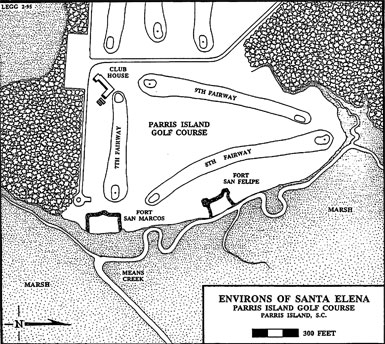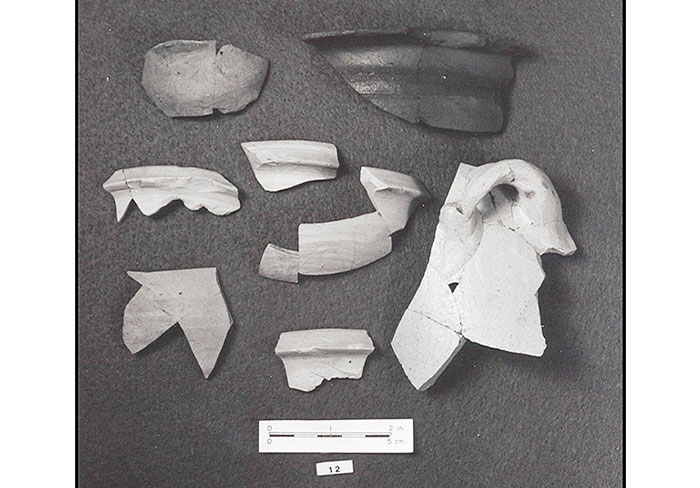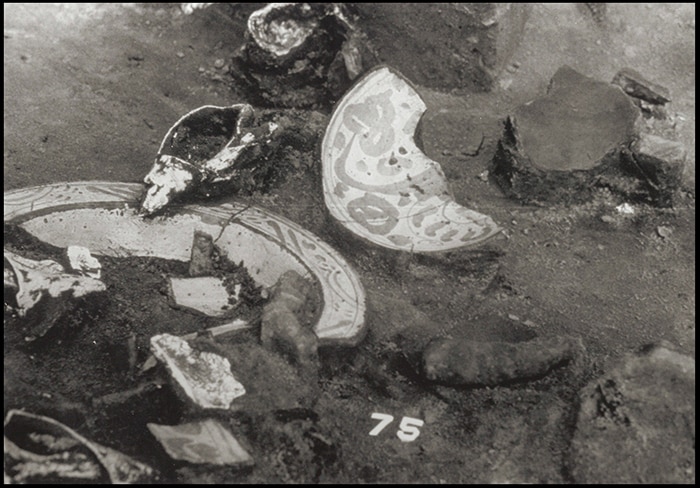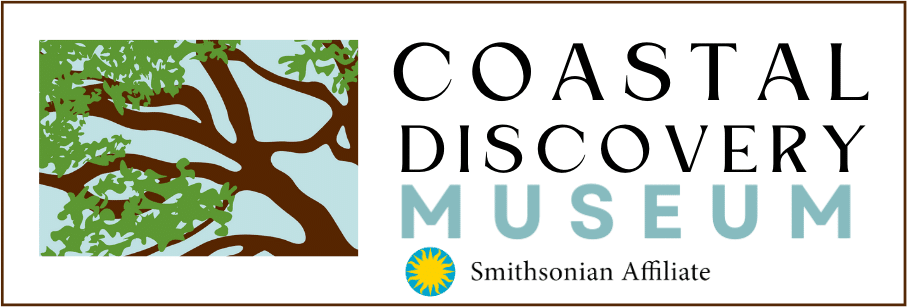Investigations by archaeologists and historians have taught us much about the history of Parris Island. Reports on excavations on Parris Island and research in archives tell us how that place once looked and how the people there once lived. But what we know today about Santa Elena is not what the experts always thought.
Until the mid-20th century, archaeologists and historians assumed the site was French, not Spanish. One of the first primary sources of evidence used to write about the history of Parris Island was a series of French illustrations from the 16th century. These illustrations were drawn by Jacques Le Moyne, a Frenchman who lived at the site when France controlled it.
The first wave of researchers at Parris Island in the 1800s believed the site of Santa Elena was French and not Spanish. They did not have written evidence that Spaniards settled at Parris Island. The first excavations happened in the 1850s. They occurred before the United States outlawed slavery and it was enslaved laborers who excavated the Santa Elena site. During that excavation, they discovered a historic artifact: a gate. The researchers leading the excavation assumed the gate was part of the French settlement, Charlesfort, because they knew about the Le Moyne illustrations.

(Source: DePratter, Chester B. and South, Stanley, “Discovery at Santa Elena: Boundary Survey” (1995). Research Manuscript Series. Book 221. pg. 7.)
During World War I, the United States Marine Corps began to use Parris Island as a training site. The Marines uncovered pottery from the 16th century when they built their training grounds on the island in 1917. Major George Osterhout of the U.S. Marine Corps and his team excavated the site after the war. Osterhout was not a trained archaeologist, but he kept careful records of their excavations. He wrote about what they discovered and decided the pottery found at the site looked like it was from Southern France.
Though Osterhout continued to excavate the site and called it a French settlement, other scholars began to publish articles that claimed the Santa Elena site was Spanish. In 1957, National Park Service archaeologists examined the artifacts discovered by Osterhout. These trained archaeologists compared the Parris Island artifacts to other 16th century artifacts found in the state of Florida. These archaeologists decided that the artifacts from Parris Island were from Spain or created by Spaniards. They determined that the excavated fort site that Osterhout called French was actually Fort San Marcos, built by Spaniards in 1577.
After the discovery that the Parris Island artifacts are Spanish, new archaeological excavations revealed more about the site. Archaeologists would also find French artifacts that indicated both the French and the Spanish settled at Santa Elena.These artifacts give historians and archaeologists a window into the lives of Spanish and French settlers. The excavations reveal how the settlers lived and created a timeline for occupations of the settlement, beginning in 1562 with the French at Charlesfort.
Archaeologists found the location of the French fort after discovering French ceramics at the site. These ceramics included faience, a tin-based pottery, and French stoneware. Archaeologists decided that Santa Elena’s first Fort San Felipe was also the site of the French-occupied Charlesfort. The French left Charlesfort in 1563 and the Spaniards built Fort San Felipe on top of it. This was the first Spanish fort built at the Santa Elena settlement.
At Fort San Felipe, archaeologists discovered French and Spanish artifacts mixed together. The Spaniards used many of the features left over from the French-occupied Charlesfort, including the moat and some of the interior buildings. Archaeologists also discovered a small blockhouse that the Spaniards called Fort San Salvador. Experts believe the blockhouse was built in early 1566, but do not know when it was abandoned. In 1570, the first Fort San Felipe burned and was abandoned.
New construction of a second Fort San Felipe began in 1570, but the actual location is still a mystery. Because of American Indian attacks, the fort was abandoned in 1576. In 1577, after the Spaniards returned to Santa Elena, they built the first Fort San Marcos. Archaeologists believe that it was abandoned in 1582 or 1583. Its current location may be under the golf course that is now on the original site of San Marcos. Fort San Marcos, although abandoned, was brought back to life with a second attempt in either 1582 or 1583.
Archaeologists believe that those with power and money, during both periods of occupation, lived in the northeast and southeast corners of the site. Some archaeological data shows that a road most likely formed the eastern boundary of a plaza that also included a church and government buildings.
The archaeological features are well preserved despite how old the site is and the modern buildings and features that have been built up around and on top of the old settlement. Today, a golf course covers most of the Santa Elena site. When it was constructed, the course was created by placing a layer of topsoil over the archaeological site, preserving the remains of the houses and forts. Additional modern features of the site include a golf clubhouse and a paved road. Monuments to the first French settlers and to the Spanish presence have been placed at the site.
While the discoveries on the island can tell us much about early Spanish and French settlements on Parris Island, other archaeological evidence at the site also includes pre and post contact American Indian artifacts, evidence of early 18th and 19th century plantations, and historic material from the U.S. Marine Corps training camp.
The archaeology at Santa Elena is not finished; there are still more stories to tell. In 2014, after more than one hundred years have passed since the first excavations, archaeologist Chester DePratter expressed the belief that only 2-4% of Santa Elena has been uncovered.

(Photo courtesy of the National Park Service)

(Photo courtesy of the National Park Service)

